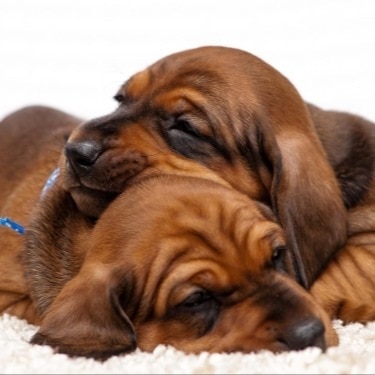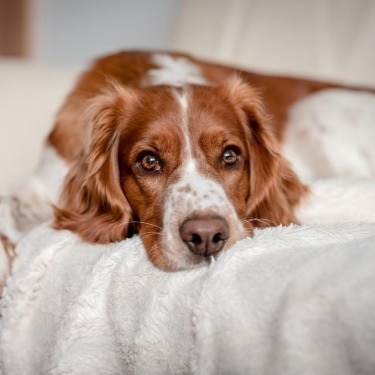
-
Find the right food for your petTake this quiz to see which food may be the best for your furry friend.Find the right food for your petTake this quiz to see which food may be the best for your furry friend.Featured products
 Hill's Science Diet Adult Chicken & Beef Entrée Dog Food
Hill's Science Diet Adult Chicken & Beef Entrée Dog FoodChicken & Beef Entrée in a delicious loaf with complete & balanced nutrition to help keep adult dogs active and healthy
Shop Now Adult Large Breed Chicken & Barley Recipe Dog Food
Adult Large Breed Chicken & Barley Recipe Dog FoodSupports healthy joints, lean muscle, and beautiful coat for large breed dogs
Shop Now Adult Chicken & Barley Recipe Dog Food
Adult Chicken & Barley Recipe Dog FoodSupports lean muscle and beautiful coat for adult dogs
Shop NowFeatured products Adult Tender No Corn, Wheat, Soy Chicken & Vegetables Stew Cat FoodShop Now
Adult Tender No Corn, Wheat, Soy Chicken & Vegetables Stew Cat FoodShop Now Senior Vitality Adult 7+ Tuna & Vegetables Stew
Senior Vitality Adult 7+ Tuna & Vegetables StewImproves Everyday Ability to Get Up & Go
Shop Now Adult Turkey & Liver Entrée Cat Food
Adult Turkey & Liver Entrée Cat FoodPrecisely balanced nutrition with the delicious taste of minced turkey & liver to help fuel the energy needs of cats during the prime of their life
Shop Now -
Dog
- Dog Tips & Articles
-
Health Category
- Weight
- Food & Environmental Sensitivities
- Urinary
- Digestive
- Joint
- Kidney
-
Life Stage
- Puppy Nutrition
- Adult Nutrition
- Senior Nutrition
Cat- Cat Tips & Articles
-
Health Category
- Weight
- Skin & Food Sensitivities
- Urinary
- Digestive
- Kidney
-
Life Stage
- Kitten Nutrition
- Adult Nutrition
Featured articles What Is Littermate Syndrome? Pet Adoption Guide
What Is Littermate Syndrome? Pet Adoption GuideLearn more about littermate syndrome in dogs and cats and how to successfully navigate adoption and early socialization processes.
Read More The Science Behind Our Love for Pets
The Science Behind Our Love for PetsLearn the scientific reasons why we have such strong connections with our pets, and what science says about the love between humans and our furry friends.
Read More How to Properly Mix Wet & Dry Pet Foods
How to Properly Mix Wet & Dry Pet FoodsAn Orange cat eating from a bowl filled with mixed food
Read More -


Angular limb deformities in dogs are deformities that affect the bones. Carpal valgus in dogs is an outward turning of the paw from the level of the wrist and is a frequently encountered example of an angular limb deformity. In all cases, angular limb deformities result from atypical bone growth due to rapid growth or damage or injury to a dog's bony growth plate. Let's take a closer look at what this might mean for your dog.
Causes of Angular Limb Deformities
All dogs' lower front legs have two long bones between their elbow and their wrist: the radius and ulna. Traumatic injuries, such as sustaining a car injury, falling or being stepped on are common causes of trauma that can result in angular limb deformities in dogs. Exactly how does this occur? Injury to a growth plate can alter and cease further growth of that bone. Due to its unique anatomy, the ulna's growth plates are at high risk for injury. Any such injury can cause the ulna to stop growing, but the radius will continue to grow. Because the two bones are connected by ligaments, the radius is under pressure and forced to alter its angle, as it's anchored down to the ulna. This gives the limb an abnormal twisted or bowed appearance.
Other causes of angular deformities include eating a food that is poorly balanced for calcium and phosphorus or excess calories and minerals fed to puppies. This is especially problematic in the fast growing, large and giant breeds of dogs. In these cases the rapid growth of the bone coupled with imbalanced or excess dietary minerals

Types of Angular Limb Deformities: Carpal Varus and Carpal Valgus in Dogs
According to veterinary specialist, Dr. Derek Fox, DVM, Ph.D., DACVS, there are numerous types and categories of angular limb deformities in dogs. In DVM360, Dr. Fox reports that classification is based on how many deformities a dog has, the direction of the bony deformities and how the bony deformities relate to one another.
Two commonly encountered types include:
- Carpal varus: In carpal varus of the foreleg, the elbows buckle or bow out more than the feet and other parts of the limb, and the feet may point inward.
- Carpal valgus: Carpal valgus in dogs occurs when the front feet point outward, or deviate away from the limb and the body's alignment.
Swelling at the elbow joint, along with pain, may be present with either type of deformity.
If this sounds like a rather complicated classification scheme, you aren't wrong. Even for veterinary professionals, this can be confusing to keep straight. The good news is you don't need to master it; simply be aware that most of these deformities affect a dog's lower front limb. You can leave the rest to your veterinarian.
Clinical Signs and Diagnosis
Angular limb deformities in dogs affect both large and small breeds, and they're most often observed when a dog is less than one year old. According to the chapter devoted to angular limb deformities in "Mechanisms of Disease in Small Animal Surgery" certain dog breeds, such as bulldogs or dachshunds, already have shortened legs, but these aren't considered angular limb deformities. Their short legs are part of their normal breed shape; they're symmetrical and they don't usually cause mobility problems. However, even these breeds can develop an angular limb deformity from the same causes as other breeds. Unusual twisting or angles of the limb are the telltale signs; lameness is another key indicator of this bony deformity.
Your vet will diagnose an angular limb deformity based on orthopedic exam findings and radiographs of the affected forelimb. They'll likely take an X-ray, sometimes with the dog under sedation, of the affected limb. This allows your vet to develop a precise surgical plan to correct the deformities.



Tasty Tips
Treatment of Angular Limb Deformities in Dogs
The goals of treating angular limb deformities in dogs include:
- Enhancing limb use and function
- Improving overall mobility
- Alleviating limb pain
- Improving the limb's appearance
If the angular limb deformity is mild and is not resulting in discomfort for your pet, no treatment may be necessary. For dogs with more serious deformities that negatively impact quality of life, treatment is surgical and depends upon the exact deformity identified. In severe cases, a portion of the affected limb is removed to compensate for the incorrect angling of the limb and/or joint. This alone may be curative, or additional surgical tools, such as bony plates and screws, may be warranted for more advanced cases.
It is critical to follow your vet's post-operative recovery plans, especially as it relates to your dog's physical therapy and meal plan to avoid complications during the healing period. A balanced dog food approved by the Association of American Feed Control Officials (AAFCO) should have all the necessary nutrients, including a proper balance of minerals, that your dog needs to help recover from surgery so be sure to consult with your veterinarian before adding any additional supplements to their food.
Outlook of Angular Limb Deformities in Dogs
The development of angular limb deformities may be avoided if you feed a growing puppy an appropriately formulated food and the correct portion size. Your veterinarian can make suggestions to you about what and how much to feed. When angular limb deformities are caught early and treated with either dietary change and, if necessary, surgery, your pup is much less likely to develop a severe deformity. For more severe deformities, surgery can help prevent or significantly delay the progressive development of degenerative conditions, such as osteoarthritis. Delaying surgery can lead to risks, such as canine osteoarthritis, pain from movement and an inability to move normally. While no surgery has a 100% success rate, the majority of angular limb deformity surgeries are successful, and appropriate intervention can help your dog live a long and healthy life.


Dr. Laci Schaible is a small animal veterinarian, veterinary journalist, and a thought leader in the industry. She received her Doctor of Veterinary Medicine from Texas A&M University and her Masters in Legal Studies from Wake Forest University.
Related products

Chicken & Beef Entrée in a delicious loaf with complete & balanced nutrition to help keep adult dogs active and healthy

Supports lean muscle and beautiful coat for adult dogs

Chicken & Barley Entrée in a delicious loaf with great taste and precisely balanced nutrition to support 5 essential building blocks for lifelong health

Supports healthy joints, lean muscle, and beautiful coat for large breed dogs
Related articles

Discover how the field of dog science is giving us more and more insights into the inner workings of our furry best friends.

Your dog's coat and skin are a big part of your dog's overall health. Ensure you keep your dog's coat healthy, by following these simple tips.

Learn how to help keep your dog's immune system in tip-top shape, including nutritional immune system support for dogs and other strategies.

Wondering where can I buy a dog? Consider adoption and explore the pros and cons of adopting a dog from a breeder versus an animal shelter.

Put your dog on a diet without them knowing
Our low calorie formula helps you control your dog's weight. It's packed with high-quality protein for building lean muscles, and made with purposeful ingredients for a flavorful, nutritious meal. Clinically proven antioxidants, Vitamin C+E, help promote a healthy immune system.
Put your dog on a diet without them knowing
Our low calorie formula helps you control your dog's weight. It's packed with high-quality protein for building lean muscles, and made with purposeful ingredients for a flavorful, nutritious meal. Clinically proven antioxidants, Vitamin C+E, help promote a healthy immune system.

